
- Home
- News
- Analysis
- States
- Perspective
- Videos
- Education
- Entertainment
- Elections
- World Cup 2023
- Features
- Health
- Business
- Series
- Economy Series
- Earth Day
- Kashmir’s Frozen Turbulence
- India@75
- The legend of Ramjanmabhoomi
- Liberalisation@30
- How to tame a dragon
- Celebrating biodiversity
- Farm Matters
- 50 days of solitude
- Bringing Migrants Home
- Budget 2020
- Jharkhand Votes
- The Federal Investigates
- The Federal Impact
- Vanishing Sand
- Gandhi @ 150
- Andhra Today
- Field report
- Operation Gulmarg
- Pandemic @1 Mn in India
- The Federal Year-End
- The Zero Year
- Premium
- Science
- Brand studio
- Home
- NewsNews
- Analysis
- StatesStates
- PerspectivePerspective
- VideosVideos
- Entertainment
- ElectionsElections
- Sports
- Loading...
Sports - Features
- BusinessBusiness
- Premium
- Loading...
Premium
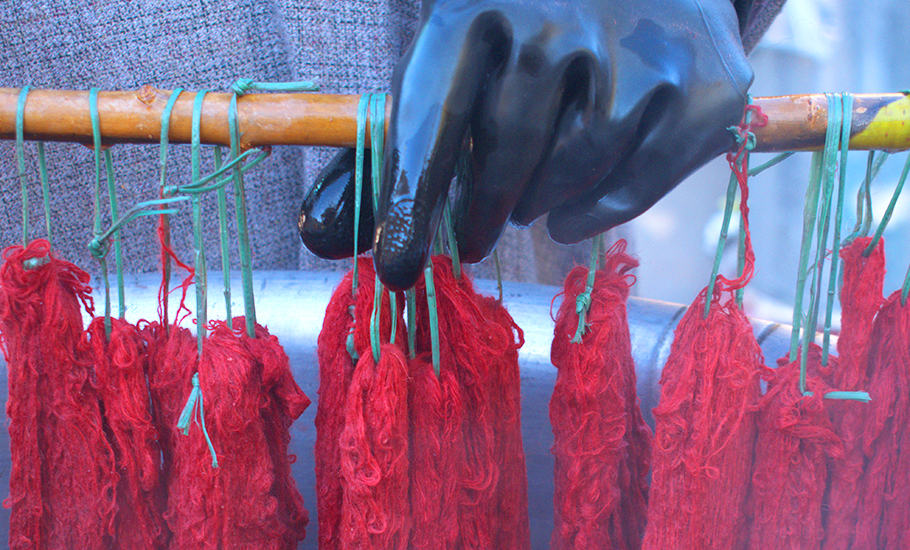
From Changthan to America: How Ladakh is claiming pashmina from Kashmir

Zospi rtsa la rama ly nha la lena jik sal. Thungspi chu la rama ly nha la lena jik sal. Seka ldemo jik chosty juksna rama ly naye lena lenin ba ly. (For the grass that you have just eaten, oh goat, Give us some good pashm. For the water that you just drank, oh goat, Give us some good pashm. Sit down on the grass and be still, oh goat, So that we can take out your pashm.) Come spring and...
Zospi rtsa la rama ly nha la lena jik sal.
Thungspi chu la rama ly nha la lena jik sal.
Seka ldemo jik chosty juksna rama ly naye lena lenin ba ly.
(For the grass that you have just eaten, oh goat,
Give us some good pashm.
For the water that you just drank, oh goat,
Give us some good pashm.
Sit down on the grass and be still, oh goat,
So that we can take out your pashm.)
Come spring and the Changpa break into the song as they comb pashm wool from their goats, which the animals put on when biting winds sweep Ladakh in winters – a practice which has existed for centuries, even though the same may not apply to the song.
Men wake up when it is still dark outside in freezing cold, collect their herds and set out in search of pastures across the Changthang plateau, south-eastern Ladakh’s cold desert. When the snow covers the mountains, the search for pastures gets even more cumbersome, but it is also the time when the changra goats — also known as pashmina goats — must be fed well because it is the time when they put on the wool on their skin.
The Changpa are nomadic pastoralists whose rebos (yak-hair) tents are scattered throughout Ladakh’s Changthang, lying between the Himalayan and Karakoram ranges. For centuries, Changpas have lived in the high-altitude landscape, herding the changra goats whose ‘pashm’ supplies the Kashmir shawl industry.
Despite braving the difficulties of staying perched at altitudes ranging from 3,600 to 4,500 metres, in conditions where winter temperatures can drop to as low as -50° Celsius, and producing cashmere wool for those who can afford to both love and buy the luxury articles such as shawls, caps and stoles made out of it, the fate of the pastoralists remained much the same.
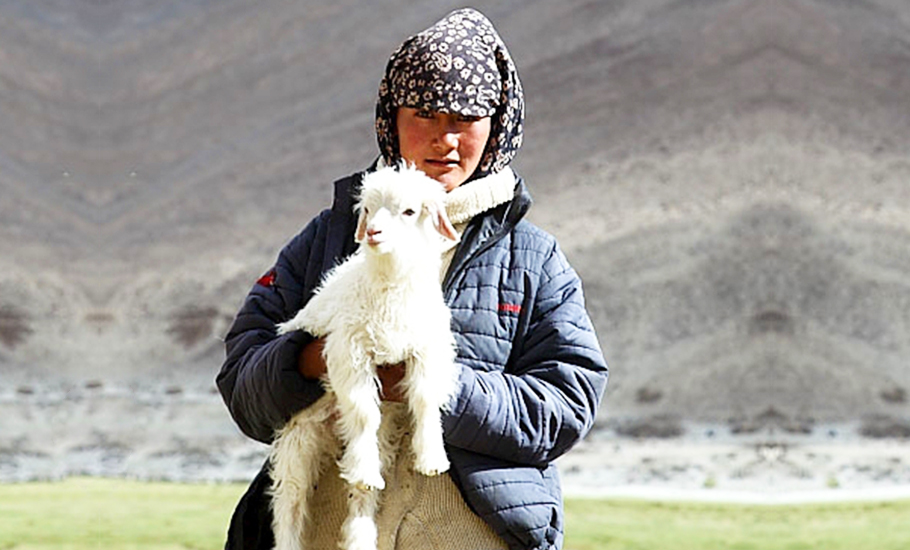
While the men reared the goats and combed it for the wool, the Changpa women in Changthang restricted themselves to traditional spinning and weaving from yak and sheep wool for personal use or at the most for irregular sale to tourists who happened to visit the villages and enquire about the availability of authentic cashmere products.
Despite being producers of high-value raw material (cashmere), people in Ladakh weren’t able to create luxury brand items from it and hence make enough money. But with a story that started in 2015, Ladakh began to own up Pashmina and is now looking to claim the legacy under Ladakhi Pashmina label from the age-old Kashmiri Pashmina tag.
What happened in 2015?
That year, then Leh deputy commissioner G Prasanna landed in the remote and troubled Chumur village as part of his routine field visits and chanced upon a self-help group run by women. The women showed a few hand-woven Pashmina products to Prasanna, trying make a modest sale. Impressed by the enterprising spirit in such difficult terrain, the deputy commissioner decided to do something to ensure a bigger platform for the women to showcase their craft. But Prasanna wasn’t the only one to realise the importance of providing support to the Changpa women. In 2013, Abhilasha Bahuguna realised there was a dwindling interest of pashmina artisans in Kashmir despite pashmina being part of a highly profitable global cashmere industry.
Given the vulnerability of the community and their craft, Bahuguna felt the only way they could do something was if the women could be banded together for greater ownership in the industry, “as active participants in the craft as well as its business, rather than being valued only for their labour”.
With Ladakh being the source of real cashmere in India, in 2017, the group succeeded in establishing Looms of Ladakh with a “vision to create a sustainable, democratic institution within the nascent handloom and handicraft industry of Ladakh”.
The same year it was set up, Tsering Toudol, an educator in Chushul village, joined the self-help group of 80 women from the nomadic tribes of Ladakh. The group makes a sustainable effort to train and empower women to work as weavers, artisans and come up with a luxury and premier brand — Ladakh Pashmina — and participate in higher value activities that fetch more money for the nomads.
“In my village majority of the women had not even travelled to Leh city. But now, over 80 women have become part of the Looms of Ladakh and are empowering their lives and the brand at the same time,” Youdol says.
Using her skills as an educator, Youdol taught the women how to write English alphabets which enabled them to sign instead of using the thumb for impression.
“Our self-help group has different centres across Changthang, where we spin and weave pashmina shawls, scarves by hand and on traditional handlooms respectively,” Youdol says.
“We did not restrict ourselves to making shawls but succeeded in making garments out of pashmina wool in contemporary designs,” she says.
A major boost for Looms of Ladakh came in October 2022 when the pashmina wool products made by the group were showcased at The Canvas store in Oculus, Westfield World Trade Centre, in the United States. The Canvas is among the largest retail stores for independent, ethical fashion, lifestyle brands and creators focused on sustainable fashion as opposed to fast fashion.
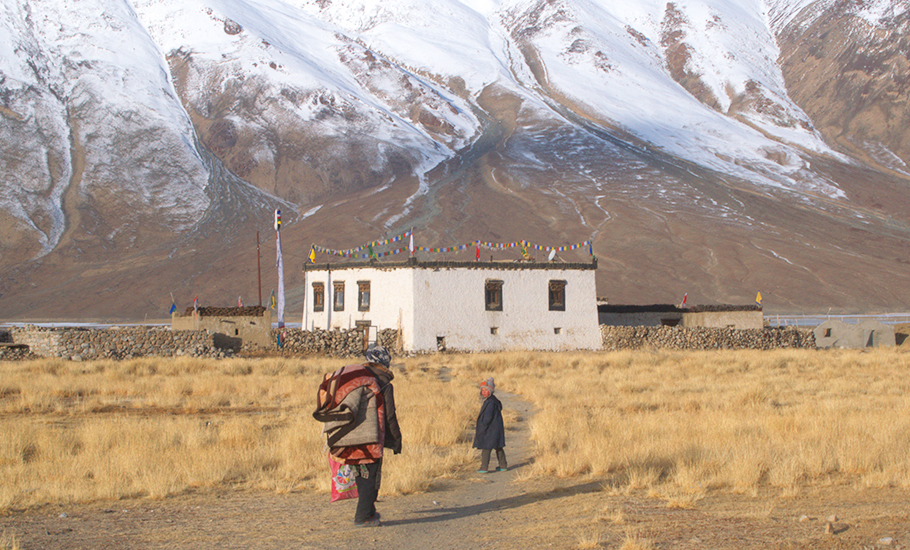
“Being at The Canvas was a good positioning for us,” says Abhilasha Bahuguna, a member and co-founder of Looms of Ladakh. “The international market was keen to know how we, as the group, are making pashmina wool products and now entering into yak, sheep and camel wool and producing exceptional products that link the Changpa tribe and artisans with the international markets.”
One of the USPs of the self-help’s products is that it is free from chemicals. “We use natural dyes from flowers, herbs from mountains, dried leaves, tree barks to colour the wool which is woven on traditional looms,” Bahuguna tells The Federal.
As the Looms of Ladakh is working to serve foreign clientele directly from Ladakh, several other local start-ups and private entrepreneurs are putting their efforts to reclaim the identity of pashmina, which over the years came to be synonymous with the Kashmir valley.
One such initiative is Lena Ladakh, the brand run by Sonam Angmo and Stanzin Minglaks.
The duo started the venture, which produces organic pashmina products in small batches, under the label ‘Slow- textile fashion’.
“At different stages of pashmina textile production, women do spinning, natural dyeing and hand weaving,” says Angmo.
Pashm – the soft gold
Pashmina, which derives its name from the Persian word pashm, meaning soft gold, the king of fibres, is the world’s finest and most expensive natural fibres, famous as Cashmere wool.
Legend has it that French Emperor Napoleon Bonaparte’s wife Josephine owned 400 pashmina shawls which then cost her 20,000 gold francs. Having featured in French fashion magazines as early as the 1790s, pashmina shawls are a fashion statement for rich women globally.
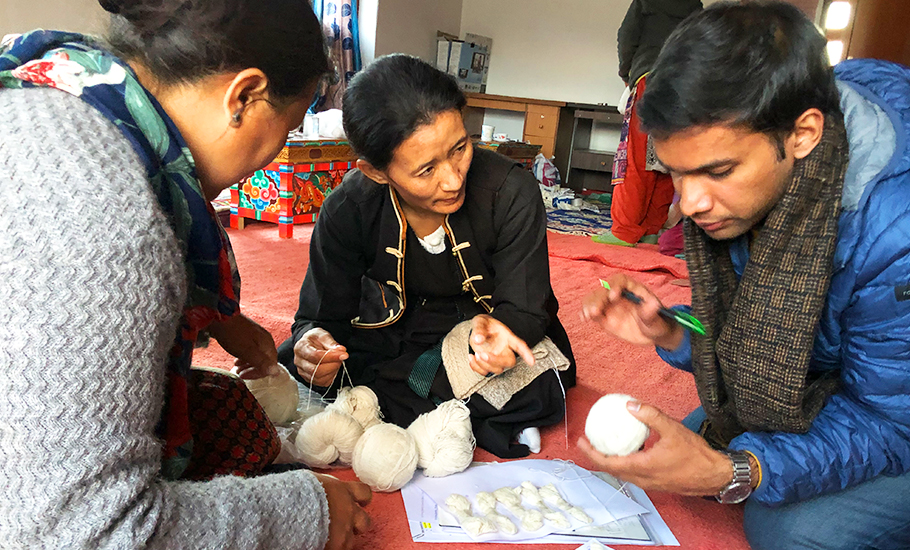
The worldwide production of pashmina fibre is around 10,000–15,000 tonnes per annum with the major producers being China (70 per cent), Mongolia (20 per cent), Iran, Afghanistan, Nepal and India. India accounts for less than 1 per cent of the pashmina produced world over.
According to Data Intelo, a-US based market research firm, the global pashmina shawls market is expected to grow at the rate of 5.5 per cent from 2022 to 2030. Data Intelo attributed to the estimated market growth “to the increasing demand for luxury products and the growing online retail sector”. In terms of type, the firm said, “The woman style segment is expected to dominate the market during the forecast period.”
Looming worries
Even as demand worldwide is rising, in Ladakh, herders are braving many new challenges, apart from the old ones of harsh weather. Due to climate change and increased population density, pasturelands are shrinking change, making it difficult to rear goats. The herders are not allowed by the army to go close to borders for grazing due to the tensions between the Indian and Chinese armies along the Line of Actual Control. Incessant skirmishes between the two armies in the recent past have only added to the troubles of the herders.
Despite the hardships, new-age interventions are now globalising the local produce.
Sonam Tsering in Leh works as a middleman who buys raw pashmina directly from herders and sells it to Kashmiri weavers. “Kashmiris have been buying cashmere from Ladakh for centuries,” says Sonam.
“Kashmir produces huge volumes of hand-woven embroidered pashmina shawls which is currently not possible in Ladakh,” Sonam says. “We cannot compete with the expertise of hand-weaving in Kashmir.”
The fact is, Sonam says, the quantity of cashmere which all the local entrepreneurs of Ladakh use in one year for making pashmina products doesn’t match up to what even one small trader from Kashmir buys from Ladakh.
“Interestingly, in Ladakh, majority of the pashmina shawl sellers buy pashmina shawls from Kashmir and then sell it to tourists in Ladakh,” he says. “Many new entrepreneurs have come up in Ladakh, but only a few of them are manufacturing the wool and selling it under the Ladakhi pashmina shawl label.”
What adds to the challenges of pashmina wool production in Ladakh is the migration of Changas, who rear changra goats under -40° Celsius, and were traditionally involved in the work. The younger generation is hardly interested in rearing the goats.
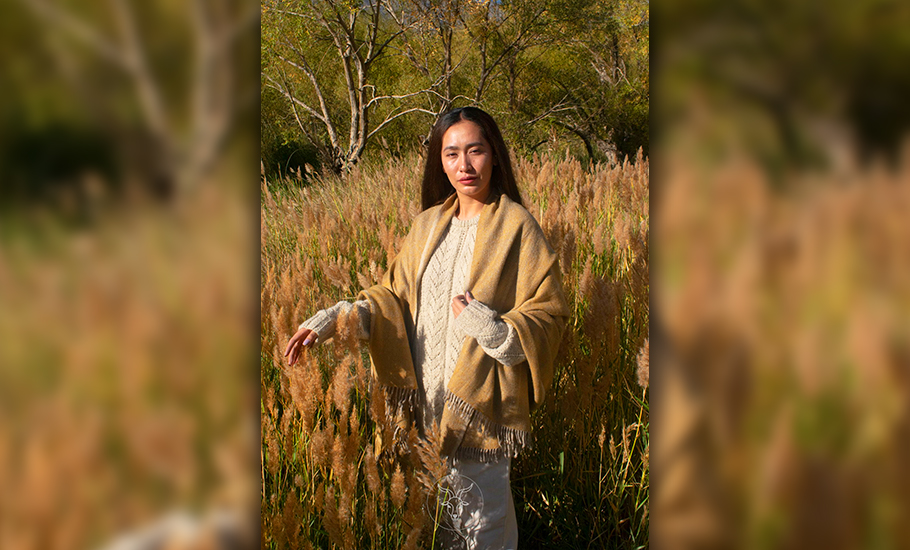
“Every year, five to ten families migrate from eastern Ladakh to Leh,” Sonam says. “Due to government boarding schools for the nomadic tribes of Changthang, the children get comfortable living conditions and proper food. And when they finish their education they have no idea how to live a traditional life in their own rebos [tents made by hand using yak wool by changpas] and they are also not willing to take their goats for grazing in different locations during winters,” he says.
Sonam believes that modern education rarely teaches people values of their own traditional life. “These nomads dream of becoming doctors and engineer. Many finally settle being salesmen, taxi drivers or tourist guides, but refuse to go back to producing cashmere.”
Originally from a herder family, Sonam believes that the government should set up mobile schools everywhere in Changthang region to help the nomadic children stay with their folks and learn their traditions.
Interventions
The hurdles notwithstanding, efforts are being made to globalise pashmina as the demand for the product is high. Tashi Namgayal Yakzai, executive councilor (animal/sheep) at Ladakh Autonomous Hill Development Council (LAHDC) says that the hill council provides 75 per cent as subsidy to promote pashmina production in Ladakh.
In 2014, then Prime Minister Manmohan Singh’s government in Delhi announced it will give Rs 650 crore as Changthang Development Package in order to secure borders as Changpas are the real custodians of Changthang-eastern Ladakh. The package was supposed to secure borders to make sure the herders are motivated to remain in highlands and use them for grazing their livestock.
In 2019, after Ladakh was carved out as a separate Union Territory from Jammu and Kashmir, its government got Rs 245 crore out of the package announced in 2014, specifically as Changthang Development Package.
“We got the Rs 245-crore package in 2022 and the UT government used the same to provide 150 pre-fabricated insulated houses, procured 6,000 quintals of fodder for livestock out of which 5,000 quintals were given to nomads and 1,000 quintals is still with the government. Incentives worth Rs 40,000 per nomadic family were also paid by the government,” says Yakzai.
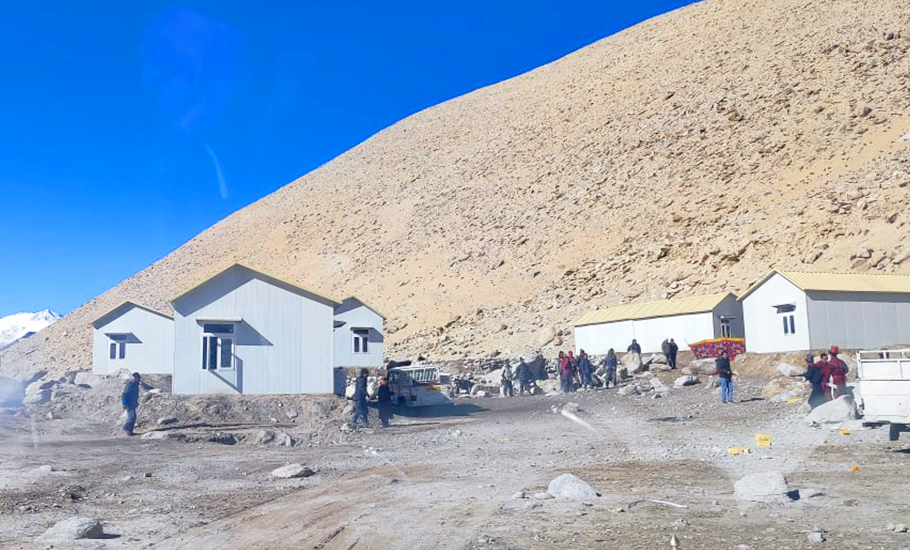
But Torma Dorjee, a herder from Korzok, says that the incentives the government is providing are not a long-term solution. “There should be value addition of wool by the herders themselves,” he says. “The sad truth is that the local middlemen, entrepreneurs and cooperative society directly buying raw pashmina from herders don’t want to give good rates.”
The monetary difference in what the herder gets and what others make in the process is stark. For instance, in 2022, the Changthang Pashmina Growers Cooperative Society procured 17 tonnes of raw pashmina from herders at Rs 3,850 per kilogram in 2022. After dehairing, the society sold the same at around Rs 15,500 per kilogram to the weaver.
“We believe this year the production would be around 30 to 35 tonnes of cashmere in Changthang,” says Thinless Nurboo, secretary to All Changthang Pashmina Growers Cooperative Society. “Out of the total production in Changthang, 17 tonnes was procured by the Society and the remaining cashmere would have gone to private brokers, Kashmir, Himachal and to other places.”
As per the local estimates, around 70 per cent of cashmere from Ladakh goes to Kashmir every year. But Feroz Ahmad Sheikh, a Kashmiri pashmina dealer says Kashmir has a demand of 1,00,000 kilogram, “Ladakh meets only 20 to 25 per cent of our demand. The rest we import from Tibet,” Sheikh says.
Meanwhile women such as Tsering Youdol are trying to change this traditional production based on demand and supply in Ladakh. With the help of Looms of Ladakh, she is empowering the producers—the nomadic women—to become craftspeople of the brand cashmere.
“Our efforts have already been noticed at the global level,” Youdol says. “It’s now a matter of time before we turn the fate of the nomadic communities in Ladakh riding on demand for pashmina.”

